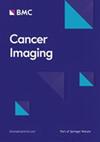Extracting value from total-body PET/CT image data - the emerging role of artificial intelligence
IF 3.5
2区 医学
Q2 ONCOLOGY
引用次数: 0
Abstract
The evolution of Positron Emission Tomography (PET), culminating in the Total-Body PET (TB-PET) system, represents a paradigm shift in medical imaging. This paper explores the transformative role of Artificial Intelligence (AI) in enhancing clinical and research applications of TB-PET imaging. Clinically, TB-PET’s superior sensitivity facilitates rapid imaging, low-dose imaging protocols, improved diagnostic capabilities and higher patient comfort. In research, TB-PET shows promise in studying systemic interactions and enhancing our understanding of human physiology and pathophysiology. In parallel, AI’s integration into PET imaging workflows—spanning from image acquisition to data analysis—marks a significant development in nuclear medicine. This review delves into the current and potential roles of AI in augmenting TB-PET/CT’s functionality and utility. We explore how AI can streamline current PET imaging processes and pioneer new applications, thereby maximising the technology’s capabilities. The discussion also addresses necessary steps and considerations for effectively integrating AI into TB-PET/CT research and clinical practice. The paper highlights AI’s role in enhancing TB-PET’s efficiency and addresses the challenges posed by TB-PET’s increased complexity. In conclusion, this exploration emphasises the need for a collaborative approach in the field of medical imaging. We advocate for shared resources and open-source initiatives as crucial steps towards harnessing the full potential of the AI/TB-PET synergy. This collaborative effort is essential for revolutionising medical imaging, ultimately leading to significant advancements in patient care and medical research.从全身 PET/CT 图像数据中提取价值--人工智能的新兴作用
正电子发射断层扫描(PET)技术的发展,最终形成了全身正电子发射断层扫描(TB-PET)系统,代表了医学成像领域的范式转变。本文探讨了人工智能(AI)在提高 TB-PET 成像的临床和研究应用方面的变革性作用。在临床上,TB-PET 出色的灵敏度有助于快速成像、低剂量成像方案、提高诊断能力和患者舒适度。在研究方面,TB-PET 在研究系统相互作用和增强我们对人体生理和病理生理学的了解方面大有可为。与此同时,人工智能融入 PET 成像工作流程(从图像采集到数据分析),标志着核医学的重大发展。本综述深入探讨了人工智能在增强 TB-PET/CT 功能和效用方面的当前和潜在作用。我们探讨了人工智能如何简化当前的 PET 成像流程并开拓新的应用,从而最大限度地提高该技术的能力。讨论还涉及将人工智能有效融入 TB-PET/CT 研究和临床实践的必要步骤和注意事项。论文强调了人工智能在提高 TB-PET 效率方面的作用,并探讨了 TB-PET 复杂性增加所带来的挑战。总之,这一探索强调了在医学影像领域采取合作方法的必要性。我们主张将共享资源和开源计划作为充分发挥人工智能/结核病-PET 协同作用潜力的关键步骤。这种合作努力对于医学成像的革命性发展至关重要,最终将在病人护理和医学研究方面取得重大进展。
本文章由计算机程序翻译,如有差异,请以英文原文为准。
求助全文
约1分钟内获得全文
求助全文
来源期刊

Cancer Imaging
ONCOLOGY-RADIOLOGY, NUCLEAR MEDICINE & MEDICAL IMAGING
CiteScore
7.00
自引率
0.00%
发文量
66
审稿时长
>12 weeks
期刊介绍:
Cancer Imaging is an open access, peer-reviewed journal publishing original articles, reviews and editorials written by expert international radiologists working in oncology.
The journal encompasses CT, MR, PET, ultrasound, radionuclide and multimodal imaging in all kinds of malignant tumours, plus new developments, techniques and innovations. Topics of interest include:
Breast Imaging
Chest
Complications of treatment
Ear, Nose & Throat
Gastrointestinal
Hepatobiliary & Pancreatic
Imaging biomarkers
Interventional
Lymphoma
Measurement of tumour response
Molecular functional imaging
Musculoskeletal
Neuro oncology
Nuclear Medicine
Paediatric.
 求助内容:
求助内容: 应助结果提醒方式:
应助结果提醒方式:


